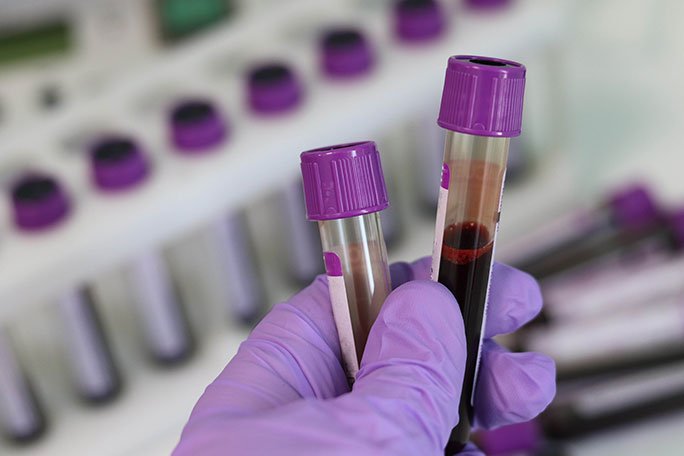Overcoming Barriers to Access Essential Medical Supplies in US Hospitals
Summary
- High costs of medical supplies and equipment
- Lack of standardized procurement processes
- Supply Chain disruptions and shortages
Introduction
Access to essential medical supplies is critical for the effective functioning of hospitals in the United States. However, there are several barriers that hospitals face when it comes to sourcing and managing these supplies. In this article, we will explore some of the key barriers to access to essential medical supplies in hospitals and discuss potential solutions to overcome these challenges.
High Costs of Medical Supplies and Equipment
One of the major barriers to access to essential medical supplies in hospitals is the high costs associated with these supplies and equipment. Hospitals are under constant pressure to reduce costs and optimize their budgets, which can make it challenging to afford expensive medical supplies.
Some of the factors contributing to the high costs of medical supplies and equipment include:
- Lack of price transparency in the healthcare industry
- Consolidation of suppliers leading to reduced competition
- Inefficiencies in the Supply Chain driving up costs
These high costs can limit hospitals' ability to procure essential medical supplies and may result in shortages or stockouts of critical items. To address this barrier, hospitals need to work closely with suppliers to negotiate favorable pricing agreements and explore opportunities for cost savings through bulk purchasing and inventory management strategies.
Lack of Standardized Procurement Processes
Another barrier to access to essential medical supplies in hospitals is the lack of standardized procurement processes. Hospitals often have complex and fragmented procurement systems, which can lead to inefficiencies, delays, and errors in the purchasing of medical supplies.
Some of the challenges associated with the lack of standardized procurement processes include:
- Difficulty in comparing prices and quality across different suppliers
- Inconsistent ordering practices leading to overstocking or understocking of supplies
- Lack of centralized oversight and control over procurement decisions
To overcome this barrier, hospitals can implement standardized procurement protocols, utilize technology solutions such as Supply Chain management software, and establish cross-functional teams to streamline the procurement process. By improving the efficiency and transparency of their procurement practices, hospitals can enhance their access to essential medical supplies and ensure optimal inventory management.
Supply Chain Disruptions and Shortages
Supply Chain disruptions and shortages pose significant challenges to hospitals' ability to access essential medical supplies. The Covid-19 pandemic highlighted the vulnerabilities in the healthcare Supply Chain and underscored the need for robust contingency planning and risk mitigation strategies.
Some of the factors contributing to Supply Chain disruptions and shortages include:
- Global sourcing of medical supplies leading to dependencies on overseas manufacturers
- Just-in-time inventory management practices leaving little room for buffer stock
- Unforeseen events such as natural disasters, pandemics, and geopolitical conflicts
To address this barrier, hospitals can diversify their supplier base, stockpile critical supplies, and establish collaborative relationships with other healthcare organizations for resource sharing during emergencies. By proactively addressing Supply Chain risks and building resilience into their operations, hospitals can mitigate the impact of disruptions and better ensure continuity of care for their patients.
Conclusion
Access to essential medical supplies is essential for hospitals to deliver high-quality healthcare services. By addressing barriers such as high costs, lack of standardized procurement processes, and Supply Chain disruptions, hospitals can enhance their ability to procure and manage critical supplies effectively. It is imperative for hospitals to invest in robust Supply Chain management practices, leverage technology solutions, and foster strategic partnerships with suppliers to overcome these challenges and ensure uninterrupted access to essential medical supplies.

Disclaimer: The content provided on this blog is for informational purposes only, reflecting the personal opinions and insights of the author(s) on the topics. The information provided should not be used for diagnosing or treating a health problem or disease, and those seeking personal medical advice should consult with a licensed physician. Always seek the advice of your doctor or other qualified health provider regarding a medical condition. Never disregard professional medical advice or delay in seeking it because of something you have read on this website. If you think you may have a medical emergency, call 911 or go to the nearest emergency room immediately. No physician-patient relationship is created by this web site or its use. No contributors to this web site make any representations, express or implied, with respect to the information provided herein or to its use. While we strive to share accurate and up-to-date information, we cannot guarantee the completeness, reliability, or accuracy of the content. The blog may also include links to external websites and resources for the convenience of our readers. Please note that linking to other sites does not imply endorsement of their content, practices, or services by us. Readers should use their discretion and judgment while exploring any external links and resources mentioned on this blog.

